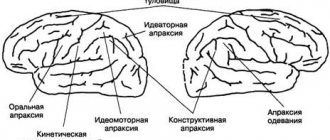What is thanatophobia
What is thanatophobia? Thanatophobia is a fear of death, an irrational, inexplicable fear. The name comes from two Greek words Thanatos - death and Phybos - fear. Fear of death is a psychological and psychiatric problem.
A phobia can arise suddenly or develop and persist for many years. Some people are afraid of the unknown (when will I die, how, what will happen next), some are worried about the death of loved ones (what will I do without them), some are afraid of not being able to finish what they started, some are afraid of pain and torment. Thanatophobia is an inexplicable fear of death in the absence of a real threat. That is, a person is young, healthy, leads a safe lifestyle, but is still afraid of dying.
This is interesting! Thanatophobia most often affects educated, inquisitive people and those who are used to being in control of their lives always and in everything.
Signs of panic fear of death
The fear of death is normal, it is associated with the instinct of self-preservation. If a person constantly takes risks and is not afraid of death, then this is an alarming sign of pathology. The other extreme is the paralyzing fear of death, which prevents one from living.
Symptoms of panic fear of death:
- increased excitability;
- suspiciousness;
- obsessive thoughts;
- doubts;
- hypersensitivity;
- irritability;
- attacks of aggression;
- tearfulness;
- fear of a specific death, for example, sudden death in a dream;
- avoidance of any changes, stress, threats (leads to complete isolation);
- avoiding conversations about death, funerals, and paraphernalia of death;
- sleep problems.
Somatic manifestations of phobia:
- dizziness;
- cardiopalmus;
- nausea;
- high blood pressure;
- frequent urge to go to the toilet;
- gastrointestinal disorder;
- loss of appetite;
- sexual dysfunction;
- decreased libido;
- fast fatiguability;
- decreased performance;
- chronic fatigue;
- a feeling of unreality of what is happening;
- feeling of suffocation;
- weight loss;
- nightmares;
- pain and other psychosomatic symptoms.
In advanced stages, panic attacks occur. This can happen anywhere and anytime, for example, in the middle of the night when a person is sleeping. At such moments, it seems to the patient that death has come even closer to him.
The nature of pathological fear of death
A phobia of death can begin in early childhood, but only manifest itself in adulthood. For the first time, the awareness of death comes to a child at three years old (from fairy tales, sometimes from real life). At this age, the child understands that animals die, parents will die someday, and a little later (at 4 years old) the child understands that he himself will someday die. The first reaction to such awareness is rage, anger, screaming. The kid is offended by his parents and demands promises that they will not die. He is afraid of his death and shouts that he will live forever. Gradually, with the support of the parents, the child gets used to this idea, and the anxiety recedes, but this does not always happen.
It is important! Pathological fear worsens after global catastrophes, terrorist attacks, if a person finds out that a plane he missed on board crashed, and in similar cases.
How to overcome a pathological fear of death
Mental pain - what is it, reasons, how to cope with it
There is a statement in psychology that if you accept information about death as the inevitable outcome of every living organism, this can become an incentive to live life with pleasure, without wasting it on anxiety and thoughts about the end of the road.
Thanatophobia is a disease that does not have a clear treatment plan. The specialist always has to conduct long conversations with the patient on personal topics, allowing them to pull out the cause of the phobia from the subconscious. A childhood memory, which began to mean a lot to a child at the very beginning of life, can be stored in deep memory for a long time and only develop into pathology at a conscious age.
Awareness of the problem
Important! Only by realizing the need for treatment will the patient be able to both get rid of thanatophobia and prevent the development of other fears.
Causes of obsessive fear of death
Why does the fear of death arise?
- Fear of the unknown. Despite many religious, philosophical and other theories, no one knows for sure what awaits after death. No one can talk about it personally. That's why we are afraid of death. Some people say they don’t expect anything and compare it to the stage before a person’s birth. And some believe in the life of the soul, rebirth.
- Loss of a loved one. Having experienced this, a person is afraid of repeating the negative experience. He is afraid that he himself will experience these feelings if someone dies, or that he will subject his loved ones to suffering if he dies. Such experiences are typical for people with dependent relationships, for example, they have a child in their care, or they are financially or physically dependent on another person.
- Fear of loneliness, low self-esteem. People with such characteristics are afraid that no one will notice their passing, no one will be around.
- Superstitions, religiosity. Believers are afraid of going to hell, of being punished for the sins they committed during their lifetime.
- Fear of not being able to finish what you started. This fear is typical of careerists, scientists, researchers, and creative people. However, any person who has clear guidelines in life, sees its meaning, purpose, and makes plans for several years ahead can fall into this category.
- Fear of pain, death in agony. If a person once experienced a serious illness, accident, catastrophe, beating, then he may develop a fear of painful death.
- Suggestibility, passion for horror films, crime news. Pictures viewed and theories heard are deposited at the subconscious level, which is why a person begins to panic about death. Most often in this case, there is a fear of becoming a victim of a maniac, robber, murderer, or mentally ill person.
- A feeling of meaninglessness and uselessness of life. The patient is afraid that if he dies right now, there will be nothing left of him.
- Fear of losing control of the situation. This is typical for perfectionists and insecure people.
- Fear that the body will look unattractive. This reason, as a rule, is combined with other personality disorders, for example, dysmorphophobia, complexes, dependence on people’s opinions, and severe lack of self-acceptance.
This is interesting! Thanatophobia most often affects residents of large cities, men during a midlife crisis, and older people.
Test for the presence of thanatophobia
To identify the causes of a phobia, a psychologist not only collects anamnesis, but also conducts tests, for example, using the “Questionnaire of the hierarchical structure of current personal fears” technique (authors Yu. Shcherbatykh and E. Ivleva). Thanatophobia is often combined with other fears, which is why this test is used.
The client is asked to rate the severity of each fear from 1 (none) to 10 (very pronounced):
- Do certain animals, such as spiders, snakes, cause you anxiety?
- Are you afraid of the dark?
- Are you worried about possible painful changes in your mental state?
- Are you worried about the possible illness of a loved one?
- Are you afraid of becoming a victim of crime on the city streets?
- Do you experience unpleasant physical sensations (chest pain, sweating, rapid heartbeat) when your boss calls you to the carpet?
- Are you worried about possible changes in your personal life in the future (divorce, infidelity, conflicts)?
- Are you afraid of responsibility or have difficulty making decisions?
- Does the thought of inevitable aging scare you?
- Are you haunted by fear if you feel an irregular heart rhythm or tingling in your chest?
- Are you afraid of the prospect of poverty?
- Are you scared by the uncertainty of the future?
- Do you feel afraid when going for an exam?
- Does the thought of starting a war scare you?
- How often do you feel the fear of death?
- Do you feel uncomfortable when you are in a confined space, such as an elevator?
- Are you afraid of heights?
- Are you afraid of depth?
- Are you worried about the fact that if your loved ones become ill, there will be unfavorable changes in your life?
- Are you afraid of getting any disease?
- Are you haunted by fears related to sexual function?
- Are you afraid of suicide?
- Are you intimidated by public speaking?
- Are you visited and frightened by obsessive aggressive thoughts towards your loved ones (beating, killing, deceiving, etc.)?
After the client answers all the questions, the psychologist compares the total score (the sum of all answers) with the average statistical results of the samples: 77.9 ± 4.7 points for men and 104.0 ± 2.5 points for women. In addition, the psychologist evaluates the severity of fear for each item. If the score is above 8, then this indicates a pronounced phobia. The psychologist analyzes the indicators for each phobia, finds relationships between different fears, and draws up an overall picture of the disease.
Causes of the appearance and development of the disease
It is unknown what exactly causes thanatophobia in humans; thanatophobes do not realize at what point they begin to experience irrational fear. The fear of death, which is common to everyone, transforms into a mental disorder, usually after some event that made an impression on the patient. In addition, there are hypotheses about the presence of genetic predisposition, the influence of the environment and standard of living. During the study of thanatophobia, psychiatrists formulated seven main and most common causes of the development of the disorder:
- The source of fear is found in religious beliefs. Each religion describes its own version of “life after death” and provides punishment for “sins” - deviations from the rules of faith committed during life. In this case, the fear of death is actually the fear of punishment.
- Thanatophobia can develop as a consequence of fear of the unknown. Oddly enough, people with good education, curiosity and highly developed intelligence are most susceptible to this disorder. The cause of the phobia is the individual’s inability to solve the riddle of death, a feeling of helplessness of his mind.
- Reassessment of priorities and devaluation of one's own life experience and significance as a result of a personal crisis sometimes leads a person to think about the futility of existence and to the fear of sudden death, which will not allow them to fully realize themselves. The thought that a significant part of life is already behind us aggravates the situation.
- Introspection and reflection on the meaning of life give rise to existential anxiety. Against the background of personal degradation or insufficient, in the person’s opinion, progress, the patient begins to be disturbed by thoughts about the non-existence that lies ahead for everyone.
- The pathological desire to control everything and everyone in one's life, characteristic of overly disciplined and pedantic people, sooner or later faces the inability to control the dying process. The phobia that arose for this reason is one of those that is difficult to treat, since the person experiences fear simultaneously of sudden death, uncontrolled aging and the inability to influence what follows after death.
- Often the cause of thanatophobia lies in personal experience. A person may be affected by the sudden death of a loved one or the experience of watching the painful decline of a seriously ill relative. The appearance of such an experience can cause a change in a person’s priorities: he begins to feel life acutely, experiences joy from his own existence and fear from the thought that he is destined for the same painful or unexpected death. The situation is aggravated by the presence of small children who depend on the patient. People with this form of thanatophobia usually strive to live as long as possible, begin to care about their health and fear illness or danger. Self-care and horror of a possible disaster also take on a pathological format.
Some people don't necessarily have to experience the shock of someone's death personally. A phobic disorder can develop in an emotional person under the impression of information received on the Internet, from newspapers and television. The fear of death does not arise in its pure form, but as an integral part of the fear of an incurable disease, war, the likelihood of a terrorist attack or natural disaster.
Features of the clinical picture
Deviations and displacement of the source of fear occur in almost every thanatophobe. This makes it difficult to make a diagnosis in the early stages of the disorder. Many people are not aware of their problem, considering their experiences to be the norm. The reasons for concern are the following:
- pain accompanying a fatal disease;
- loss of reason and destruction of personality;
- the inability to independently provide and serve oneself, which for many is synonymous with loss of dignity and self-respect;
- worries about the fate of incapacitated children and infirm relatives who depend on the patient.
The sources of fear also include fear of cemeteries, symbols of death, pathological disgust and fear of the dead, fear of otherworldly phenomena - ghosts and apparitions.
Typical and individual symptoms
Thanatophobia with deviations in the source of experiences forms a certain set of symptoms, which combines common signs for all patients and individual changes in behavior. Signs typical of thanatophobes can be divided into three groups:
- physical - tremors of the limbs, headaches, rapid breathing and heart rate, nausea, increased sweating;
- mental - uncontrollable panic attacks, confusion between real and unreal events, inadequate reaction when mentioning the source of fear, depression, sleep disorder, decreased libido;
- emotional - refusal to discuss, thoughts about death or persistent transfer of any communication to this topic, constant agitation, guilt and anger.
The motivation and, as a result, the behavior of thanatophobe changes. If the cause of fear is death in a plane crash, the person refuses to fly. Fear of cancer forces people to constantly visit hospitals and undergo medical examinations; this can be compounded by mistrust of doctors. People in creative professions are afraid of not leaving a proper mark; they are fixated on creating a masterpiece or implementing a “super idea” that should glorify them. Such patients are often selfish, stubborn and unresponsive to criticism and other people's opinions.
Thanatophobes are united by one idea: all their experiences and fears are associated exclusively with their personal death. The death of strangers, unless it is an impetus for the development of a phobia or does not confirm their conviction (for example, statistics of plane and car accidents), does not affect patients.
Ignoring the obsessiveness of the condition and refusing the help of loved ones and psychiatric therapy leads to the appearance of symptoms that accompany a severe form of thanatophobia:
- refusal to communicate with loved ones and reducing your social circle;
- loss of true direction in life and inability to carry out daily responsibilities and work;
- the formation of concomitant psychosomatic diseases, dysfunction of the internal organs of the human body;
- the desire to drown out thoughts of death leads to alcoholism or drug addiction.
Basic forms of fear of dying
Fear of death as a phobia has several subtypes. Let's look at each of them in more detail.
Fear of death of loved ones and loved ones
The fear of losing a loved one can be associated with childhood psychological trauma (frequent and prolonged separations, someone's death) or with excessive physical, psychological, and material dependence on a person in adulthood. In some cases, fear is caused by a person’s egocentrism and selfishness (afraid of losing attention, status, benefits).
Obsessive fear of cardiac arrest
The fear of cardiac arrest is called cardiac phobia. The disorder occurs in both children and adults. With this type of phobia, the patient tries not to sleep on the left side, avoids nervous and physical stress, and constantly undergoes medical examination.
Fear of dying during childbirth and pregnancy
It is more common in complicated pregnancy, stress, poor heredity, and chronic diseases in women. This type of fear is divided into two subtypes: fear of dying during childbirth and leaving the child orphan, fear of giving birth to a stillborn child. In some cases, fear does not go away even after childbirth. In this case, the woman is characterized by increased anxiety, she listens carefully to the baby’s every breath, and overprotects him. The reason for this fear is the mother’s personal psychological trauma and intrapersonal conflicts.
Panic fear of death in a dream
This form of fear develops against the background of chronic diseases, nightmares, and panic attacks. However, healthy people can also suffer from this phobia if they are suggestible and prone to superstition. Lonely people are afraid that no one will be nearby, that the body will not be found soon.
Fear of death in the elderly
The fear of death is associated with the fear of aging. The fear of old age, in turn, is caused by changes in public attitudes towards this period. Previously, old age was perceived as a stage of wisdom, rest, and time for oneself. Now old age is associated with poverty, dementia, and loneliness. It is important to understand that the nature of old age depends solely on the person himself. We have the power right now to invest in the future, find a hobby, and take care of our health.
Fear of dying from illness
Associated with pain and suffering. It occurs if a person watched someone’s painful death or has a chronic or incurable disease. More often we are talking about the fear of death from a specific disease, for example, a person is afraid of contracting HIV. Hypochondriacs and nosophobes - people with a fear of illness - are at risk.
Criteria for pathological fear
- Excessive intensity of fear ( quantitative
aspect). - Unusual content and unusual objects that cause fear ( qualitative
aspect). - Inadequacy of the fear reaction to the situation in which it arose.
- Chronication of
a situation of fear. - The individual's lack of ability to reduce or overcome fear.
- The existence of restrictions
that prevent one from leading a lifestyle characteristic of a given age, the cause of which is fear.
Pathological anxiety.
Anxious reactions and avoidance behavior 1) are experienced by people as unreasonable, inadequately strong and occurring too often;
2) they begin to avoid situations that cause anxiety and lose control over anxiety;
3) anxiety reactions occur consistently and last longer than usual;
4) lead to a violation of the quality of life
Monosymptomatic fears
—
Monosymptomatic
, specific (isolated) phobias
- phobias limited to a strictly defined situation
- fear of heights, nausea, thunderstorms, pets, dental treatment.
Fear of animals (spiders, dogs, horses, snakes) is especially common.
Previously, such phobias were named after the object, but due to the variability of such phobias, they somewhat moved away from this principle.
Monosymptomatic phobias occur primarily in childhood, adolescence, and young adulthood.
Children and adolescents may develop similar fears after being exposed to certain situations.
Since contact with objects of fear is accompanied by intense anxiety, they subsequently try in every possible way to avoid them
Main criteria:
1) distinct fear
in front of certain objects and situations;
2) distinct avoidance
of such objects and situations.
The state of fear is accompanied by pronounced vegetative manifestations (sweating, increased urination, tachycardia, lability of the cardiovascular system).
Personally, teenagers are introverted, anxious, inactive, and closely attached to one of their loved ones.
Often there are people in the family with similar features.
Nosophobia
Hypochondriacal phobias ( nosophobias)
) - obsessive fear of some serious illness, phobia of “internal stimulus”
The most commonly observed are cardio-, cancer- and stroke-phobias, as well as syphilo- and AIDS-phobias, lysophobia (fear of madness).
The content of obsessive fears is influenced by the current situation in medicine in its personally and socially significant aspects.
At the height of anxiety (phobic raptus), patients sometimes lose their critical attitude towards their condition - they turn to doctors of the appropriate profile and demand examination.
More than half are patients with cardiophobia.
With lissophobia, it is not so much the madness itself that is frightening, but the possibility of a condition that cannot be controlled. Fear is accompanied by a feeling of tension, decreased mood, increased self-control, sleep disturbance, and decreased performance.
Cancerophobia. Patients pay attention to the slightest changes in bodily sensations, appearance, and any details that may indicate illness. With a long course, anxious suspiciousness and egocentrism become more acute.
Social phobias
Fear of various socially significant situations, fear of being the center of attention, accompanied by fears of negative evaluation by others and avoidance of social situations
- a pronounced and persistent fear of one or more social situations in which the individual encounters strangers or is evaluated by others.
- the individual is afraid to show symptoms of fear because he will feel awkward. For children, such fear should manifest itself not only with adults, but also with children.
- Facing a frightening social situation almost always causes an immediate anxiety response, which can take the form of a panic attack.
- In children, fear may manifest itself in the form of tears, fits of anger, stupor, or a desire to run away or hide.
Criteria for diagnosing social phobia (DSM-IV)
- Frightening social situations are avoided or experienced with intense anxiety.
- Avoidance behavior, a state of anxious anticipation, or severe discomfort in frightening social situations significantly disrupts the person's normal lifestyle, interferes with his or her professional (or academic) success, as well as social interactions with other people, or the phobia causes severe distress
Social phobias are a common manifestation of adolescent anxiety disorder.
With the growing importance of social situations for adolescents, anxiety and fear also acquire this direction. They often center around exam situations, eating or public speaking, contacts with the opposite sex, and all forms of behavior in public places.
Teenagers fear that in these situations they will become dizzy, vomit, or be ridiculed.
Fear is accompanied by typical physiological manifestations of anxiety (tachycardia, hand tremors, nausea, increased urination, avoidance of eye contact). Often patients consider somatic symptoms to be the primary problem. Symptoms can increase until regular panic attacks occur.
Teenagers are characterized by such characteristics as isolation, timidity, low self-esteem, fear of failure and fear of criticism.
Cognitive-behavioral models for explaining the emergence and maintenance of social phobia.
The self-representation model and the cognitive vulnerability model have become particularly important.
- The self-presentation model
plays a decisive role in the fact that an individual sets as his goal to make a special impression on others and at the same time doubts his ability to achieve this.
Those. Social phobia arises from the expectation or experience of social evaluation in real and imagined situations and the motivation to impress, as well as a feeling of insufficient self-efficacy.
Additional situational and dispositional factors are perceived or actual deficiencies in social skills or low feelings of self-worth that can affect motivation and perceptions of self-efficacy.
- The Cognitive Vulnerability Model
—Individuals with anxiety disorders perceive themselves to be exposed to uncontrollable external and internal danger. This leads to a state of doubt and lack of self-confidence.
The individual focuses on his own weaknesses or experiences of previous failures. Socially anxious individuals constantly assess the degree of potential threat in the flow of events and look for opportunities to overcome such situations. Cognitive distortions in the form of illogical and negative thoughts about a situation prevent you from correctly assessing the threat and your own effectiveness.
A special sign of social phobia is a self-fulfilling prophecy (blushing or not knowing what to say). Anticipated negative experiences deter anxious individuals from social interactions and thereby reinforce distorted beliefs about the nature of vulnerability.
Subjective beliefs and forecasts increase the likelihood that an individual will become preoccupied with a social situation or try to avoid it.
Anticipation of potentially dangerous situations becomes even more sensitized.
As a result, a stream of negative thoughts arises about one’s inferiority and inability to overcome possible problems.
The resulting physiological arousal serves as further evidence of the existing danger and difficulty in coping with the situation.
Beliefs about social situations:
- begins to think that social situations pose a threat to one's sense of self-worth or social standing;
- believes that he can solve problems if the behavior is perfect;
- this is not feasible, he lacks the abilities necessary to behave properly.
Predictions regarding social situations:
- his behavior will inevitably lead to trouble, embarrassment, rejection, humiliation, and loss of status.
Environmental factors:
- sensitization through environmental influences (learning processes): the behavior of anxious parents leads to the formation of anxiety in children if parents communicate their fears to children and protect them from certain situations (parental attitudes regarding raising children);
- previous negative experience of contact with a reference group (peers and the opposite sex).
Symptoms of anxiety:
- anxious anticipation of the situation;
- concentrating and focusing on socially threatening stimuli;
- negative thoughts about oneself, about one’s own behavior and others’ assessment of oneself;
- increased physiological arousal;
- severe anxiety about the evidence of anxiety symptoms.
Consequences of anxiety:
- real or imagined behavioral disorders,
- perception of one’s own behavior and its assessment according to the criteria of perfectionism;
- assessment of one's behavior as inadequate;
- focusing on imagined negative consequences of inappropriate behavior
- Social phobias
- Concern that anxiety will be noticed and negatively evaluated by them leads to reinforcing avoidance of social situations and, as a result, to negative reinforcement of avoidant behavior.
- Over time, serious social deficits may accumulate, further fueling the problem.
Isolated social phobia
There are two groups: isolated and generalized social phobias.
Monophobia
, accompanied by relative restrictions in the field of professional or social activity (fear of public speaking, communicating with superiors, performing work operations in the presence of others, eating in public places).
Isolated social phobias are the fear of not performing habitual actions in public, associated with anxious expectations of failure.
(expectation neurosis according to E. Kraepelin, 1915), and as a result - avoidance of specific life situations.
There are no difficulties in communication outside of such key situations.
Ereytophobia belongs to this group of phobias.
- fear of blushing, showing awkwardness or confusion in society. Ereytophobia may be accompanied by fears that others will notice a change in complexion. Accordingly, shyness and embarrassment appear in public, accompanied by internal stiffness, muscle tension, trembling, palpitations, sweating, and dry mouth.
Generalized social phobia
Generalized social phobia is a more complex psychopathological phenomenon; along with phobias, it includes ideas of low value and sensitive ideas of relationship.
Disorders of this group most often appear within the framework of scoptophobia
(Greek scopto - joke, mock; phobos - fear) - fear of appearing funny, of discovering signs of imaginary inferiority in people.
In the foreground there is an affect of shame, which does not correspond to reality, but determines behavior (avoidance of communication, contact with people).
The fear of being embarrassed may be associated with ideas about people’s hostile assessment of the “flaw” attributed to themselves by patients, and corresponding interpretations of the behavior of others (disdainful smiles, ridicule, etc.).
Why is it important to get rid of the fear of death?
The life of a thanatophobe cannot be called full. Here are just a small part of the consequences of a phobia:
- break of friendly, family relationships;
- career collapse;
- deterioration of physical well-being (diseases of the cardiovascular system, gastrointestinal tract);
- psychosomatic and mental disorders;
- attempts to escape anxiety and reality through addictions.
It is important! If you have noticed pathological fear in yourself or other people, it is recommended to urgently consult a psychologist. He will determine the subtype of death phobia, the root cause and tell you how to deal with the fear of death.
How to get rid of the fear of death
How to overcome the fear of death? It is possible to get rid of a phobia only if the patient recognizes the problem and wants to be cured. Otherwise, even a psychologist will not be able to help. Cognitive behavioral psychotherapy, hypnosis, and drug therapy are used for treatment. At the early stage of a phobia, you can cope with fear on your own; the same methods of struggle are suitable as an auxiliary therapy when treated by a professional.
Advice from a psychologist: effective ways to get rid of the fear of dying
If a person is ready to say “I am afraid of death,” then the treatment will be easier and faster. Perhaps the advice of psychologists on how to overcome the fear of death will be enough:
- Analyze your fear, break it down into its components, think about what exactly scares you. First, determine whose death you fear. After that, think about why you are afraid of it. For example, if you are worried about the death of your spouse, then it is possible that you are dependent on him. Anxiety will decrease if you become a self-sufficient person.
- Hang out with positive, cheerful people who are so passionate about life that they have no time to think about death.
- Find your life's work, hobby, socially useful hobby.
- Avoid watching horror films, thrillers, detective stories, crime chronicles and the like.
- Expand your horizons, communicate with different people, travel. Study the specifics of attitudes towards death in different cultures.
- Find a reason to be happy every day.
It is important! In case of a panic attack, carry ammonia with you and master breathing exercises.
Cognitive behavioral therapy
It involves replacing negative attitudes with positive ones through persuasion. At the beginning of therapy, the psychologist helps the client find the cause of fear, understand himself, after which new statements are selected. Under the supervision of a specialist, the client changes his attitude towards death, his perception and behavior. Treatment takes several months.
It is important! Hypnosis is used very rarely, more often as an adjunct to cognitive behavioral psychotherapy. The fact is that going into a trance can further traumatize a person who is afraid of death.
Independent work
How to overcome the fear of death on your own? Independent work is aimed at getting rid of irrational attitudes. Give yourself the following thoughts:
- death is an integral part of life;
- I cannot control and know everything, but I do what I can;
- my life is not in danger, I am a healthy and young man;
- in trying to avoid death, I avoid life;
- I am obliged to live according to my nature, to follow the meaning of my life.
Now let's take a closer look at how to get rid of the fear of death.
Awareness of the cyclical nature of life
The ancient Greek philosopher Epicurus spoke about death this way: “death is nothing for a person, because when we exist, death does not yet exist, and when death comes, we no longer exist.” Not only are experiences meaningless, but the process of dying itself is inevitable. All people go through this, there is no need to focus on it.
The memory remains
Let's discard theories about the afterlife and consider the issue of life after death in a different context. Products of creativity, children, socially significant matters - all this forever preserves the memory of a person. It is important to be a significant and necessary person during your lifetime, then you will be remembered.
Don't keep your feelings to yourself
Don't be alone with your feelings, talk to loved ones. This is especially important if you are concerned about someone's life due to a dangerous profession or unhealthy lifestyle. Perhaps together with someone you will find a solution to the problem.
Use life
Learn to live to the fullest. Try something new, develop, go towards the main goal. Maybe it's time for you to change jobs or take advanced training courses. Think about which of your desires, needs, and abilities you have not revealed.
Optimistic view
Phobias affect those who are fixated on negativity. Once you get rid of it, you will be free from fear. Learn to see positivity, joy, success. Admit to yourself whether you are happy. If not, then do everything you can to become one. This point of working on yourself echoes the previous one. A person who is satisfied with himself and his life does not think about death. He lives a happy present and future, constantly making new plans.
Decide on a worldview
Some people find solace in religion, some in creativity. Find your own way to turn the uncertainty of death into understandable prospects and expectations. Decide for yourself what awaits you after death.
Causes of thanatophobia
Psychologists put forward several theories that help understand the reason for the development of thanatophobia. Today, all of them are amenable to active study. It is possible that over time, experts will come to a common opinion on this issue, which will have a positive effect on the treatment of fear of death.
Theory 1
Most people are afraid of the unknown
According to observations, people begin to fear death after witnessing such a phenomenon. This circumstance puts them into a depressed state.
The greatest shock is caused by the unexpected death of a loved one. This event provokes a panicky fear of waiting for death.
After the experience, people search for information about what death is like. They have questions regarding why a particular person died. There is also a great interest in the afterlife and its existence.
After experiencing the loss of a close relative or friend, it is difficult for a person with thanatophobia to get rid of thoughts about death. He is constantly afraid that something like this will happen again.
Theory 2
Fear of death worries people who are highly influenced by news received from the media. The Internet and television now show many cases of deaths that happen all the time. All this leaves its mark on the minds of impressionable people.
Theory 3
Many psychologists associate the pathological fear of death with a personal crisis. One day, every person asks questions about the meaning of life. To get the maximum amount of information about this, men and women delve into special literature. Long-term interest in such topics can lead to a change in a person’s perception of himself and the world around him. All this affects the development of fears, including thanatophobia.
Theory 4
An unsatisfactory life can exacerbate dark thoughts
A midlife crisis can lead to pathological fear. This theory explains why the phobia in most cases bothers men and women aged 35-50 years.
When experiencing a midlife crisis, a person constantly rethinks his own life, tries to find the true meaning in it and determine its value. As a result, he is engulfed in philosophical reflections that can lead to the appearance of unwanted thoughts in his head. They give rise to the fear of death.
Theory 5
We are afraid of death because human consciousness is influenced by religious beliefs. This theory is a logical explanation for why religious people often encounter thanatophobia.
Each faith describes death in detail and what happens to a person's body and soul after death. Despite this, believers still have many questions, the lack of answers to which leads to the development of fear.
If a religious person is afraid of dying (faces phobias), then only a specialist can help him cope with his fear. Psychologists often focus their attention on the fact that it is quite problematic for a believer to get rid of phobias, since such people are difficult to respond to psychotherapeutic correction. This is because the information that the psychologist gives the patient has many differences from what the church taught him.
Theory 6
People begin to ask questions about how to overcome the emerging fear of death when they notice its symptoms. The unknown can contribute to the development of a mental disorder. A person is frightened by everything with which he is not yet familiar. And death is an insufficiently studied phenomenon, hence many questions to which no answers have been found.
Theory 7
A person’s fear of sudden death may arise due to the inability to control such events. This theory explains the occurrence of phobia in people who are accustomed to being responsible for everything that happens around them. Death is beyond any control, so this state of affairs makes them experience a strong fear of meeting it.
When thanatophobia progresses
When thanatophobia progresses, a person lives from one attack of panic and despair to another attack. And between them he remains in a gloomy, depressed state. An attack can occur anywhere. At this time, there is a strong fear of losing control over oneself and going crazy.
It is important! Thanatophobia requires immediate contact with a psychologist if fear interferes with life. For example, if a patient cannot cross the road even at a pedestrian crossing, if he refuses to use gas and electricity because he is afraid of an explosion or short circuit.











